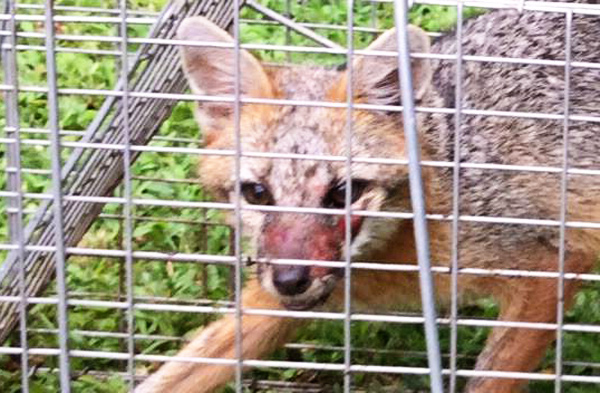- info@wildlifeanimalcontrol.com
Call us for help in your town
Wildlife Control Education
Diseases Foxes Carry
Foxes are creatures of the wild that usually
arise from the dog family. They are mainly found
in wild areas and forests but sometimes can be
spotted in urban areas looking for food such as
small animals like rabbits. It is important to
note that foxes rarely attack humans. In fact,
they totally do not attack humans. A fox will
usually run away when approached by humans as an
act of protecting itself. It is considered
reflex action. This is because many humans
intend to hurt them with the assumption that the
fox might attack or bite them. This is not true.

Wildlife rehabilitators who deal with wild
animals and in this case foxes are usually aware
of all the attributes of a healthy animals
because it is their job to take in a sick animal
and care for it, with the right medication,
feeding and sheltering practices until the
animals is back to full health. Animal
scientists are also to determine an animal that
is operating at full health because they have
studied the animal anatomy and behaviour well.
Therefore, wildlife rehabilitators and
scientists are able to determine when a fox is
sick and are also well aware of a sick fox’s
behaviour. They are also knowledgeable about the
health risks that foxes pose to humans in terms
of what kind of diseases that foxes carry.
Just what diseases do these foxes carry? It is
believed that because foxes are from the same
family as the dogs, they carry the same disease
as the dogs but rarely are they capable of
transmitting the diseases to humans.
One of the diseases that foxes carry is known as
Toxocariasis. This originates from the
roundworm. The worms lay eggs inside the foxes
and they release this disease to the soil
through their waste products.
Another disease is Mange. This is a disease most
common in foxes but the risk f humans getting it
is very minimal because of less protracted
direct contact between humans and foxes.
It is easy to identify symptoms of a sick fox.
- A fox that will easily allow you to get close to it is sick because it does not have the energy to run away from you. It might be needing help.
- If the fox is not responding to any touch i.e. if it is not moving any part of its body then it might be sick
- The limbs might be damaged
Go back to the How to get rid of fox home page.
Need fox removal in your hometown? We service over 500 USA locations! Click here to hire us in your town and check prices - updated for year 2020.

















